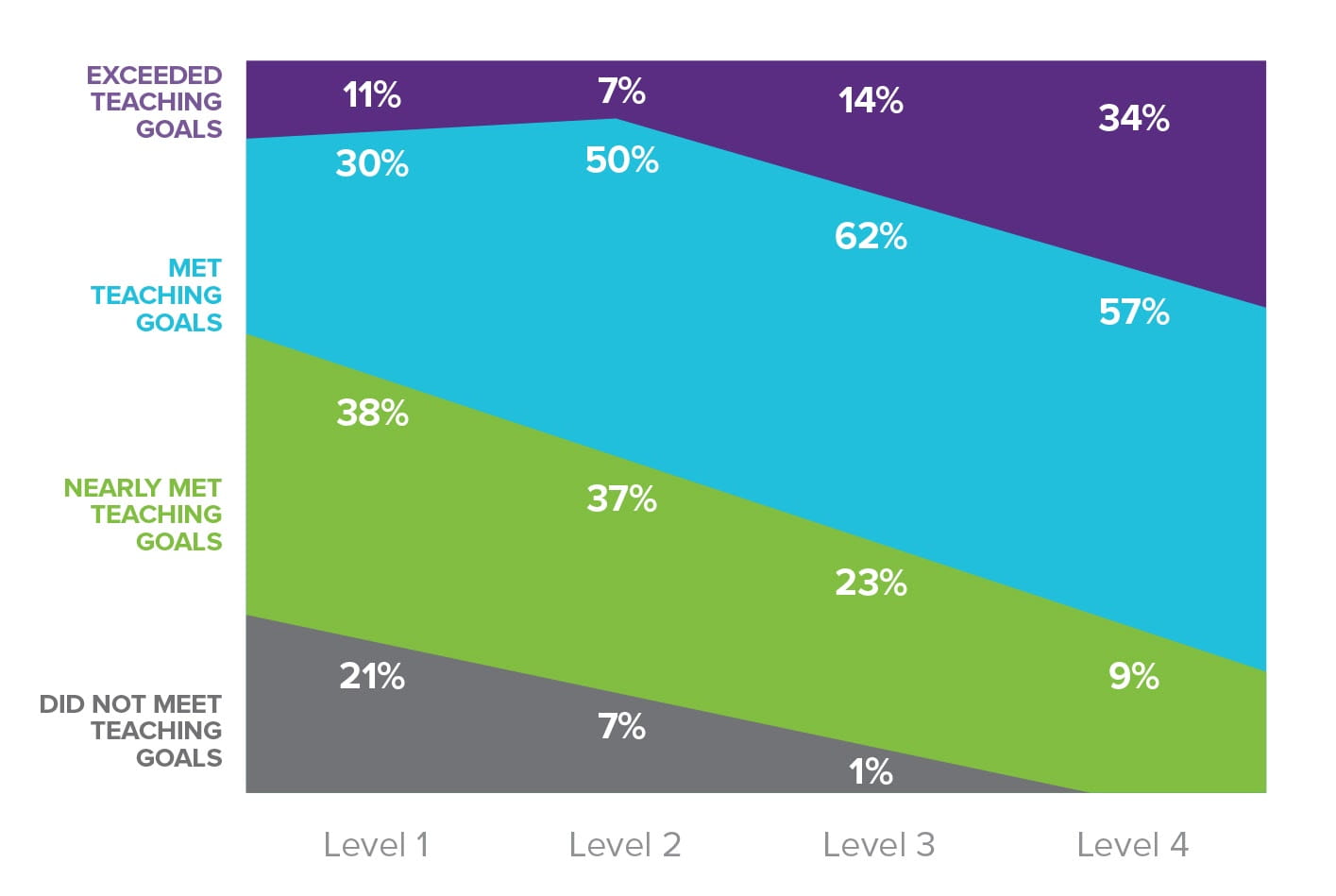Confirmed: Schools around the world that report high levels of technology leadership, infrastructure, integration and professional development observe more positive teaching and learning results.
Building The Ties That Improve
The pandemic has been long. But use of technology in classrooms will go on much longer. And thanks to two years of schools assessing their actions and seeing the results, we have a much better idea of how good edtech capabilities and great teaching and student results go together.
They go together really, really well.
This new visual report, “EdTech Assessment Tool: Connecting Strong Capabilities with High Outcomes,” reaches a stunning conclusion from two years of data: educators who report the highest level of overall technology capabilities in their schools are ten times more likely to observe high teaching and learning outcomes. It’s a clear connection that’s gotten stronger over time.
Let’s unpack that a bit, and what it means for your school.
EdTech Assessment Tool Explained And Expanded
Effective edtech isn’t just the latest device or a cool app. It starts with strategic planning and continues all the way through checking, on an ongoing basis, to make sure the results are what you want.
The EdTech Assessment Tool provides that kind of structure and support. Educators who complete the self-assessment—based on U.S. and international standards and best practices—receive a custom profile for their school, with suggestions on what to prioritize and where to invest.
Our new visual report analyzes EdTech Assessment Tool capabilities and outcomes data received from nearly 1,300 educators (administrators and teachers) worldwide over a two-year period.
22 Capabilities For EdTech Effectiveness
But wait? What’s a “capability?” And how do you rate them?
Simply put, an education technology capability is an action schools take to prepare or implement learning technologies. It can be anything from student participation in technology planning to the focus of professional learning. Educators rated elements that support a capability from “not at all” to “completely,” reflecting four stages of development in their school or system.
The original self-assessments—the ones covered in this report—had educators rate 22 capabilities clustered into four areas, or “pillars”: leadership and engagement, technology integration, professional development, and technology infrastructure.
Since the data was collected for the visual report, the EdTech Assessment Tool has added a fifth pillar: blended learning. A recent companion report shows solid connections between those capabilities and outcomes—and here are the highlights for the four other pillars.
Tech Infrastructure Leads The Pillars
Technology infrastructure and management—including network infrastructure, compatibility of learning technologies, technical support and design of learning spaces—was the best developed of the four original pillars, even exceeding overall development.
Key point: While foundational for any good edtech implementation, it’s easy to get stuck on the hardware and network part. The other pillars are also needed for effective technology.
High Capabilities Are Tied To Teacher And Student Performance
Educators who reported their schools had the highest level of capabilities, at stage or level 4 in the visual report, really shine when it comes to observed outcomes.
Ninety-one percent of educators reporting the highest level said their school met or exceeded its teaching and learning goals in the previous year.
Ninety-two percent of educators reporting the highest level said their school had slightly or greatly improved average test scores in the previous year.
As a matter of fact, if tech capabilities were reported as strong, so were four more outcomes: teacher satisfaction in schools over the previous year, change in schools’ rankings or ratings at their last review, schools meeting technology implementation and adoption goals in the previous year, and reported level of student preparedness to be active contributors to society and grow their well-being, life, and social skills.
What About The Teachers’ View?
Some 400 teachers were part of this survey group. In our next post, the connection between classroom technologies in use and outcomes—and how teachers may have a different perspective than administrators.
Take The EdTech Assessment
In the meantime, learn how your school or district can prioritize edtech work and investment for better results. The SMART EdTech Assessment Tool’s self-evaluation will give you a free custom profile with useful recommendations at smarttech.com/education/profile.







